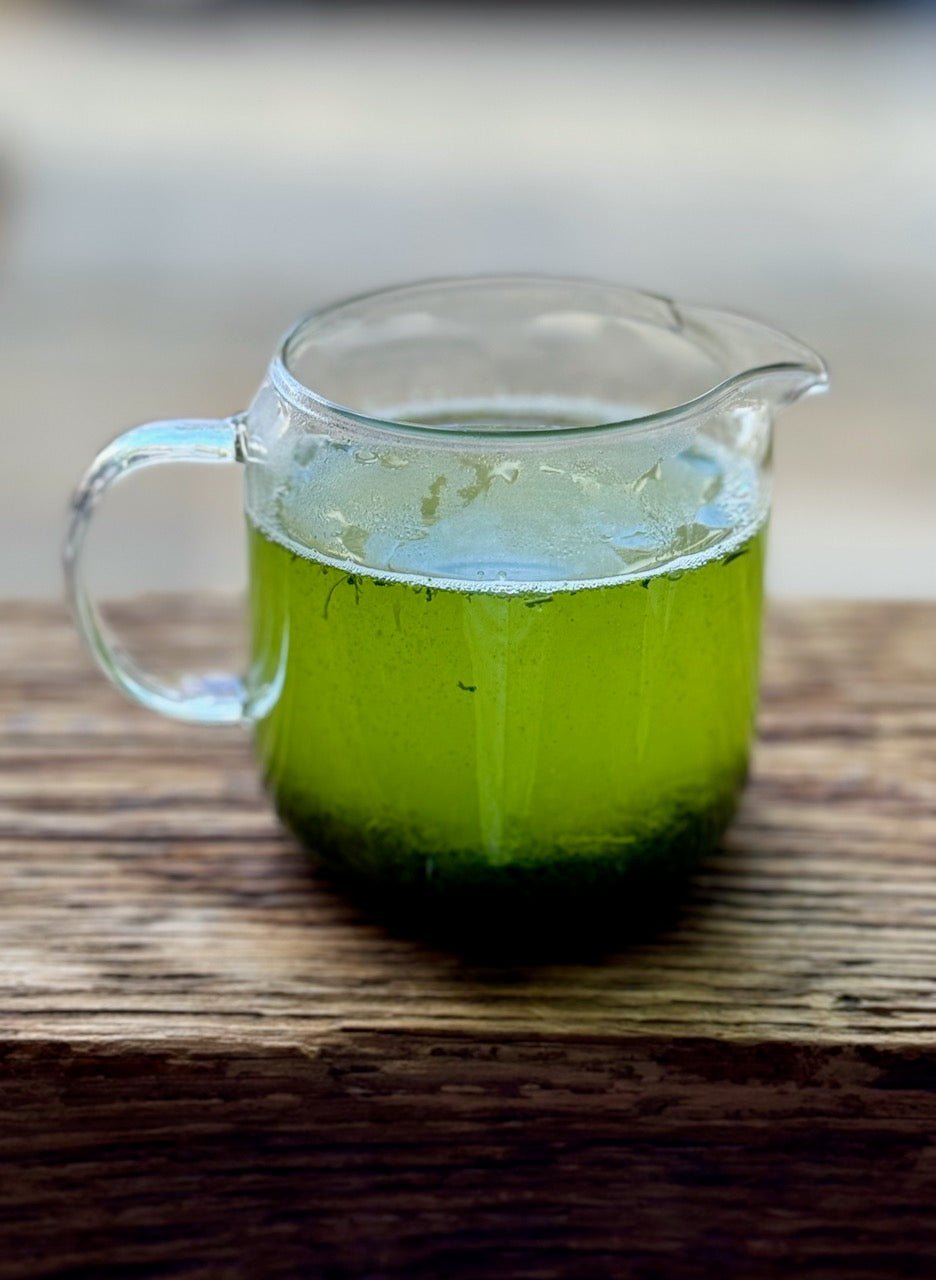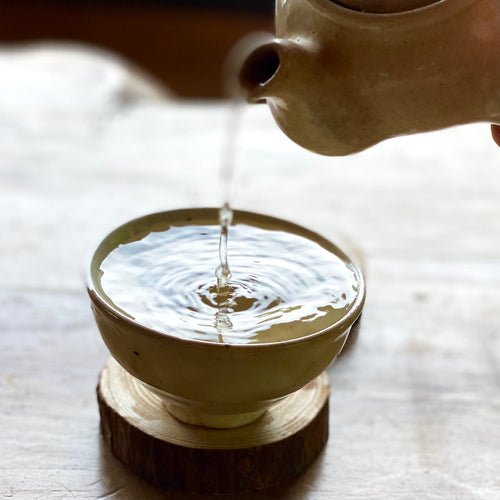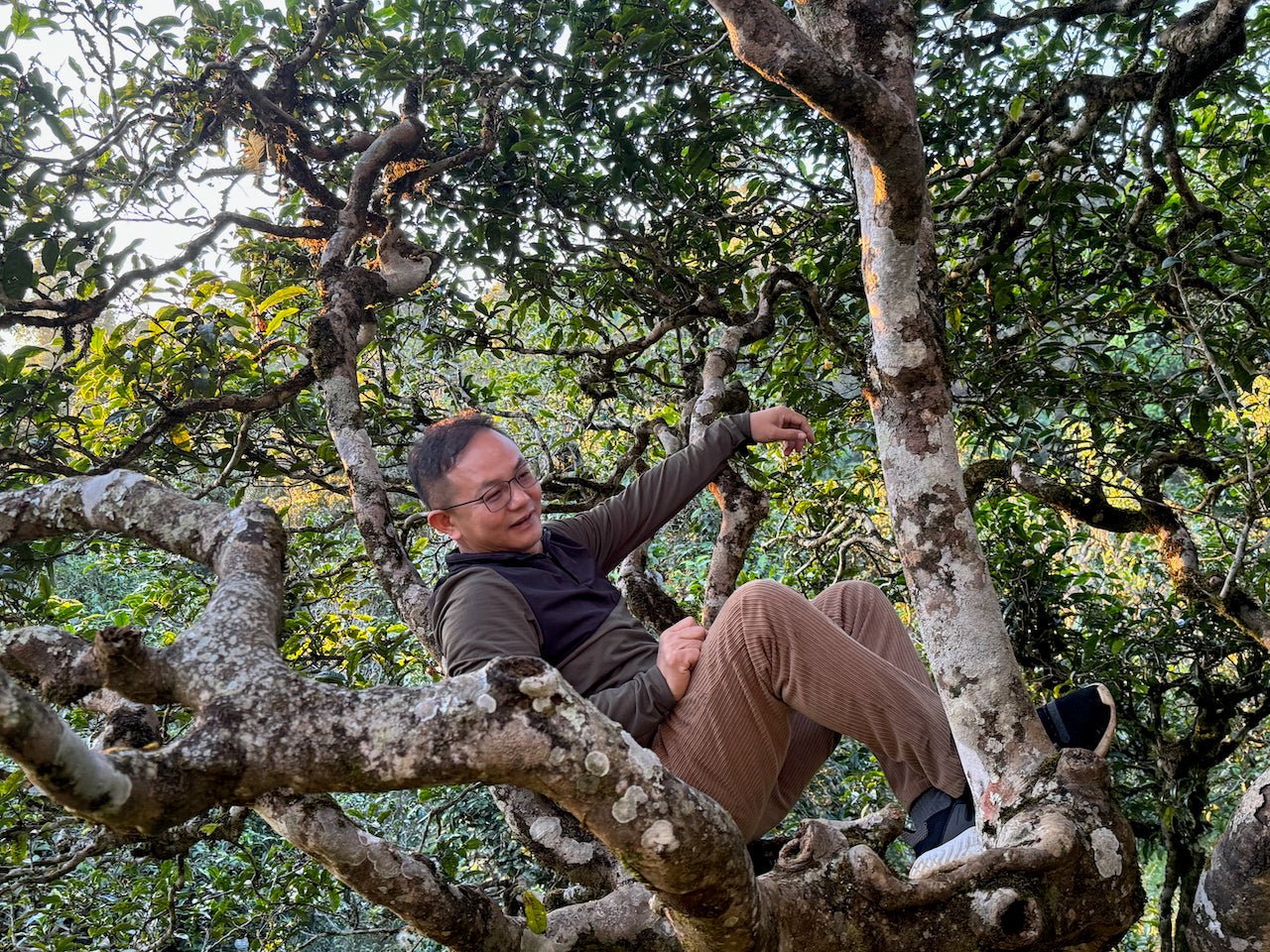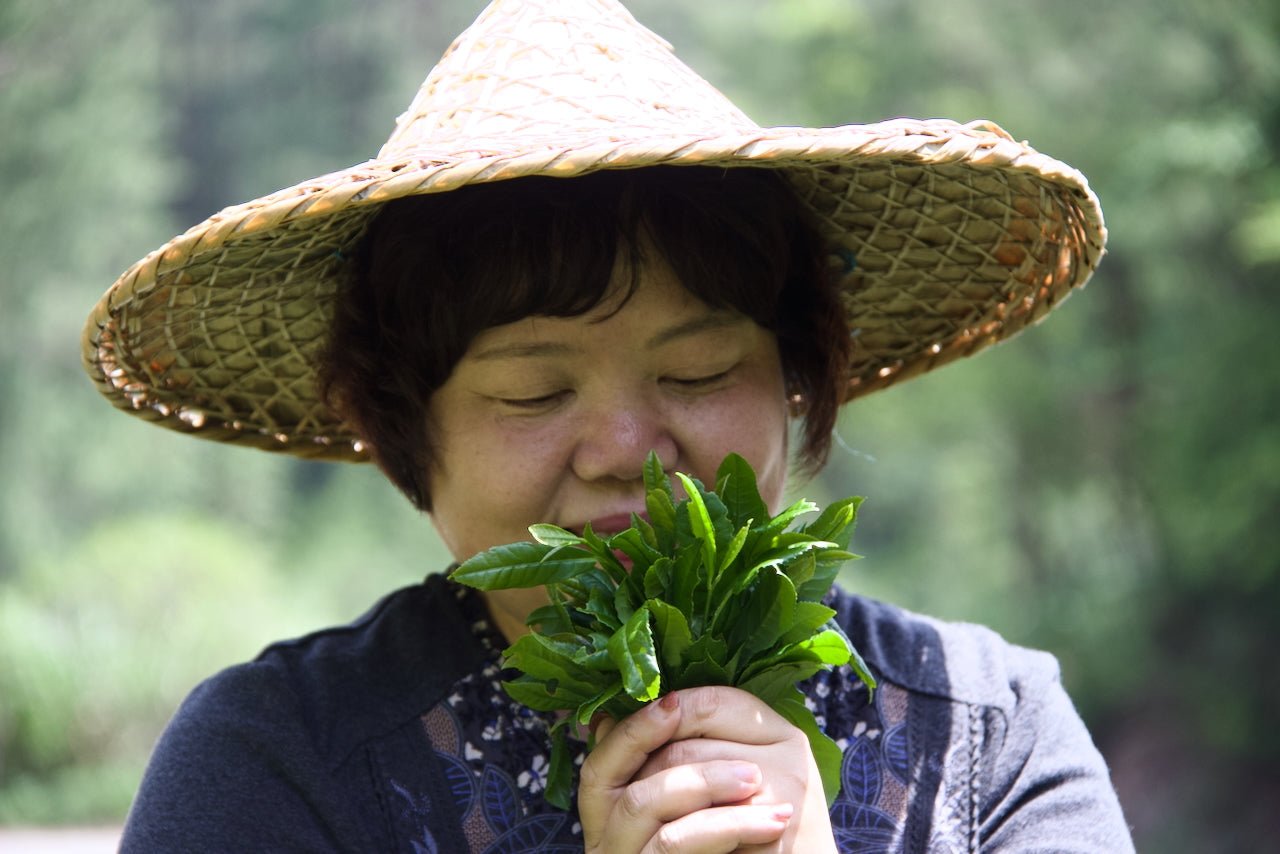What is Sencha?

Sencha is stype of green tea that has been steamed and rolled in shape that resembles fine needles. Along with matcha and hojicha, it is one of Japan’s most easily recocgnizeable types of tea.

The word is composed of two characters:
- 煎 (Sen) has a few meanings, mostly related to processing with heat. It can translated as roast (which is not really how sencha is made), cook, brew…
- 茶 (Cha), of course, means tea.
The term ‘sencha’, historically, was used to differentiate ‘steeped tea’ as opposed to ‘whisked tea’ (i.e. matcha). Please read our article about Baisao and the Rise of Sencha in 18th Century Japan if you’re interested in this topic
. In short, he dedicated his life to make tea very accessible to a broad audience in Japan.

The modern definition of sencha applies specifically to tea leaves that have been steamed and rolled into a needle shape. Other kinds of steamed tea include tama ryokucha (steamed and rolled into a ball shape), kukicha (made with tea twigs), tencha (the ‘flakes’ that are milled into matcha) and several types of bancha. You may also find some lots of kamairicha that are both pan-fired (the definition of kamairicha) and steamed.



Sub-Categories of Sencha:
Depending on how long the tea is steamed, you may find:
- Fukamushi Sencha (usually steamed between 60 and 120 seconds)
- Asamushi Sencha (20 to 30 seconds).

The tea may also be classified depending on its exposure to sunshine in spring:
- Roji Saibai Sencha (露地栽培煎茶) or “open field sencha” is exposed to sunlight throughout the year.
- Kabusecha (被せ茶) or “shaded tea” bushes are covered 7-14 days before the harvest. Woven straw screens are a traditional material used of this purpose; most modern tea growers use a polypropylene mesh.
- Gyokuro (玉露) or ‘jade dew’ is a very special type of shade grown tea that represents less than 1% of Japan’s annual harvest. In this case, the grower builds a canopy over the tea field which provides shade to the tea trees over several weeks. You may learn more about gyokuro in this article (A Case to Start your Day with Gyokuro).

Brewing Sencha:
A excellent, very simple of way to enjoy sencha is by brewing it in cold (or ice cold) water. You will find this to be a very clean, vibrantly green and energizing drink. You can find some instructions here:
Steeping sencha in hot water is more traditional. We find that every single tea has different paramenters for an ideal steep; however, as a rule of thumb, brewing sencha with water that is far from boiling point tends to be a good idea. For some super delicate gyokuro we would go as low as 45°C or 50°C; for rougher leaf ‘zairai’ roji saibai sencha we could go as high as 80°C.



Comments